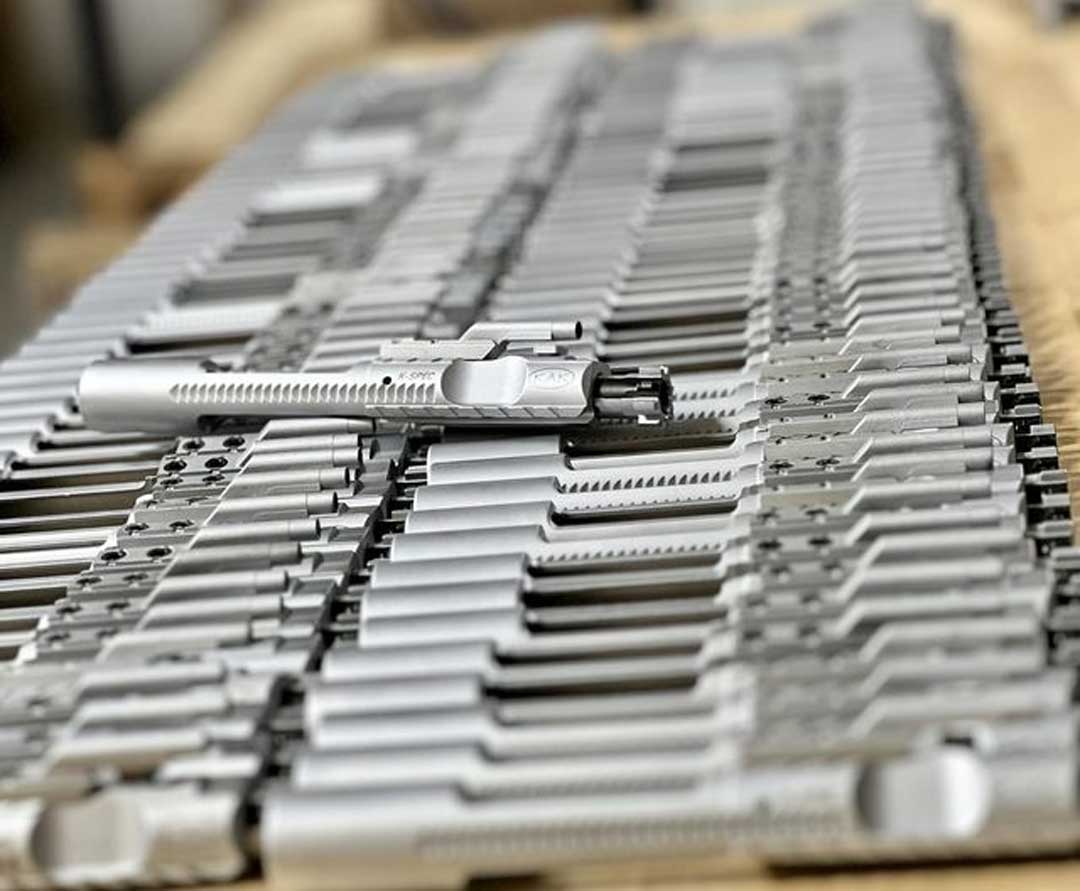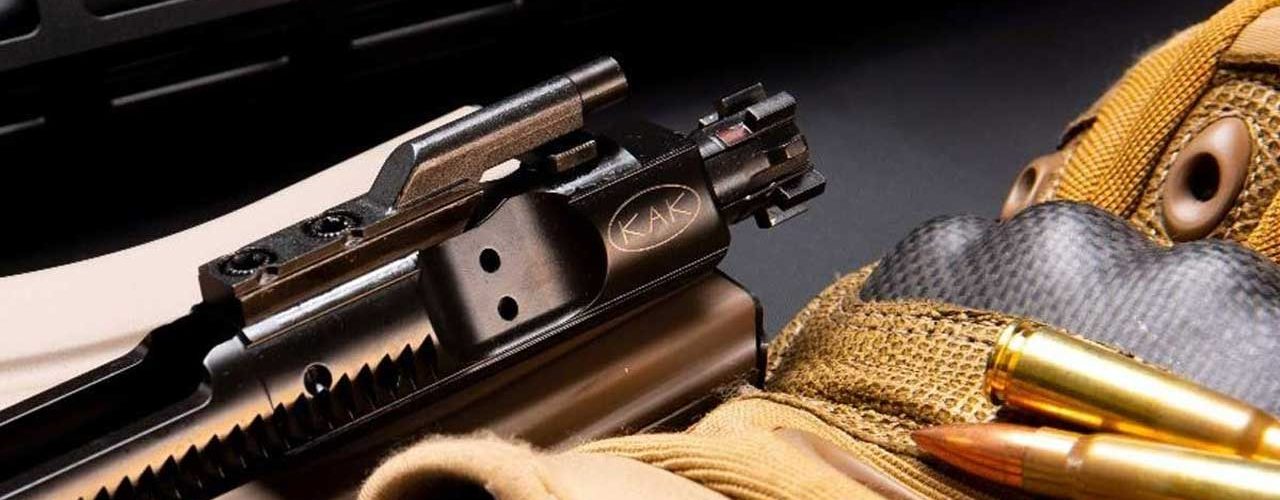Are you in the market for a reliable and high-performing bolt carrier group (BCG) for your firearm? Look no further! In this comprehensive buyer’s guide, we will walk you through everything you need to know to choose the perfect BCG. From understanding the different components of a BCG to evaluating the various materials and finishes available, we have you covered.
At KAK Industry, we understand the importance of finding a BCG that meets your specific needs and preferences. That’s why we have crafted this guide to provide you with all the information you need to make an informed decision. Whether you are a seasoned shooter or a novice enthusiast, this guide will help you navigate the vast array of options in the market and choose the BCG that best suits your firearm.
From examining factors such as durability, compatibility, and price to exploring popular brands and customer reviews, we leave no stone unturned in our quest to help you find the perfect BCG. So, get ready to take your firearm’s performance to the next level with our definitive Bolt Carrier Group Buyer’s Guide. Let’s dive in!
Importance of choosing the right BCG for your firearm
The bolt carrier group (BCG) is one of the most critical components of a firearm’s operation. It is responsible for chambering the next round, extracting and ejecting spent casings, and resetting the trigger for the next shot. Understanding the importance of a bolt carrier group can significantly impact the reliability, durability, and overall performance of your firearm.
Investing in a high-quality BCG ensures smooth cycling, reduces the risk of malfunctions, and enhances accuracy. Whether you are a competitive shooter, a hunter, or a self-defense enthusiast, having a reliable BCG can make a world of difference in the field or at the range.
Different types of BCGs: mil-spec, enhanced, and lightweight
When it comes to bolt carrier groups, there are several types to choose from. The most common types are mil-spec, enhanced, and lightweight BCGs. Understanding the differences between these types will help you determine which one is best suited for your firearm.
- Mil-Spec BCG: Mil-spec BCGs are designed to meet the specifications set by military standards. They are known for their ruggedness, reliability, and compatibility with a wide range of firearms. Mil-spec BCGs are typically made from high-quality materials such as 8620 steel for the carrier and 9310 steel for the bolt. They are also heat-treated for added strength and durability.
- Enhanced BCG: Enhanced BCGs are an upgraded version of the mil-spec BCGs. They often feature additional enhancements such as improved gas flow, enhanced extraction systems, and enhanced coatings for reduced friction and easier cleaning. Enhanced BCGs are popular among shooters who prioritize performance and reliability.
- Lightweight BCG: Lightweight BCGs are designed to reduce the overall weight of the firearm. They achieve this by utilizing lighter materials such as titanium or aluminum for the carrier. While lightweight BCGs can reduce recoil and improve handling, they may sacrifice some durability compared to mil-spec or enhanced BCGs.
Factors to consider when choosing a BCG: material, coating, and weight
When selecting a BCG for your firearm, several factors should be taken into consideration. These factors include the material of the BCG, the coating or finish applied to it, and the weight of the BCG.
- Material: The material of the BCG plays a crucial role in its durability and performance. The most commonly used materials for BCGs are steel, titanium, and aluminum. Steel BCGs offer excellent durability and are known for their resistance to wear and tear. Titanium BCGs are lighter compared to steel, reducing the overall weight of the firearm. Aluminum BCGs are the lightest but may not be as durable as steel or titanium.
- Coating: The coating or finish applied to the BCG serves to protect the surface from corrosion, reduce friction, and enhance lubricity. Some popular coatings include phosphate, nickel boron, and DLC (Diamond-Like Carbon). Phosphate coatings are the most common and provide good corrosion resistance. Nickel boron and DLC coatings offer superior lubricity and reduced friction, resulting in smoother operation and easier cleaning.
- Weight: The weight of the BCG can affect the overall balance and handling of the firearm. Heavier BCGs can help reduce felt recoil, while lighter BCGs can improve maneuverability. It’s important to find a balance between weight and performance that suits your shooting style and preferences.
Understanding these factors is crucial in selecting the best BCG for your needs. To illustrate, let’s explore a standout example from KAK Industry, known for its innovative design and exceptional quality.
Featured BCG Spotlight: KAK Industry’s K-SPEC Bolt Carrier Group
When it comes to high-performing bolt carrier groups that meet and exceed the considerations of material, coating, and weight, the KAK Industry K-SPEC BCG sets a new standard. Designed for the AR-15, it exemplifies what to look for in terms of durability, reliability, and performance.
Why Choose the K-SPEC BCG?
– Adaptable to All Conditions: The K-SPEC is optimized for flawless operation, whether running suppressed or unsuppressed. Its design eliminates the need for additional adjustments, making it a truly versatile component for any setup.
– Exceptional Durability and Reliability: Crafted from the finest materials, including 8620 steel for the carrier and 9310 steel for the bolt, the K-SPEC BCG is built to withstand rigorous use. It features a full-auto profile, ensuring compatibility and reliability under various conditions.
– Innovative Design for Reduced Noise and Enhanced Comfort: With unique slotted angled carrier rails and downward gas vents, the K-SPEC BCG is engineered to minimize noise and gas blowback, enhancing your shooting experience.
– Dual Ejector System for Consistent Ejection: Drawing on over a decade of experience, KAK Industry’s dual ejector system ensures reliable ejection and consistent performance, a testament to their commitment to quality and innovation.
– Enhanced Performance with Suppressors: Our K-SPEC is engineered to redefine your shooting experience when paired with a silencer. Its advanced gas redirect system significantly lowers the sound signature, offering a notably quieter report. This feature ensures that peak shot noise is substantially reduced, making the K-SPEC an ideal choice for users seeking both stealth and efficiency in suppressed shooting scenarios.
Proudly Made in the USA: The K-SPEC BCG reflects KAK Industry’s dedication to excellence, with every component machined and assembled in-house using state-of-the-art technology. This commitment ensures that each K-SPEC BCG meets the highest standards of quality and performance.
For those seeking a BCG that combines reliability, durability, and performance, the KAK Industry K-SPEC Bolt Carrier Group is an exemplary choice. Its advanced features and robust construction make it an ideal addition to any AR-15, ensuring peak performance in any condition.

Understanding BCG components: bolt, carrier, gas key, and firing pin
To fully understand the function and performance of a BCG, it’s essential to familiarize yourself with its various components. The main components of a BCG include the bolt, carrier, gas key, and firing pin.
- Bolt: The bolt is the heart of the BCG and is responsible for chambering the round, locking the breech, and extracting and ejecting spent casings. It consists of several parts, including the bolt body, bolt lugs, extractor, and ejector. The quality and design of the bolt greatly impact the reliability and longevity of the BCG.
- Carrier: The carrier is the housing that holds the bolt and is responsible for transferring the energy generated by the gas system to cycle the action. It moves back and forth within the upper receiver and is connected to the buffer tube via the buffer and buffer spring. The carrier should be sturdy, properly heat-treated, and machined to ensure smooth operation.
- Gas key: The gas key is attached to the carrier and interfaces with the gas tube to redirect gas from the barrel into the BCG. It is secured with screws and should be properly staked to prevent gas leaks. A well-designed gas key ensures proper gas flow and reliable cycling.
- Firing pin: The firing pin is a small, pointed rod located within the bolt that strikes the primer of the cartridge to initiate ignition. It should be made from a durable material and properly sized to ensure consistent and reliable ignition.
How to assess BCG quality and reliability
When choosing a BCG, it’s important to assess the quality and reliability of the product. Here are several factors to consider:
- Manufacturer reputation: Research the reputation of the manufacturer and look for reviews and feedback from other shooters. Established brands with a track record of producing reliable and high-quality BCGs are often a safe bet.
- Material and construction: Pay attention to the material and construction of the BCG. Look for BCGs made from high-quality materials such as steel or titanium, and ensure they are properly heat-treated and machined.
- Testing and certifications: Some manufacturers subject their BCGs to rigorous testing and certify them to meet certain standards. Look for BCGs that have been tested and certified to ensure they meet the necessary performance requirements.
- Customer reviews: Reading customer reviews can provide valuable insights into the performance and reliability of a BCG. Look for reviews that highlight positive experiences and reliability over extended periods of use.
By considering these factors and doing your research, you can make an informed decision and choose a BCG that offers the quality and reliability you desire.
Best BCGs for specific firearm platforms: AR-15, AK-47, and 9mm
Different firearm platforms may require specific BCGs to ensure optimal performance. Here are some recommendations for popular firearm platforms:
- AR-15: For the AR-15 platform, mil-spec BCGs are the most common and widely compatible. Look for BCGs made from high-quality steel, properly heat-treated, and with a durable coating such as phosphate or nickel boron. Enhanced BCGs can also offer improved performance in terms of extraction and reliability.
- AK-47: The AK-47 platform typically uses a different style of BCG compared to the AR-15. Look for AK-specific BCGs that are designed to work with the AK-47’s long-stroke gas piston system. These BCGs are often made from durable materials such as steel and feature enhanced coatings for smoother operation.
- 9mm: BCGs for 9mm firearms, such as pistols or carbines, are designed to work with blowback-operated systems. Look for BCGs specifically designed for 9mm that are compatible with your firearm’s specific configuration. These BCGs should be made from durable materials and feature enhanced coatings to handle the higher pressures generated by the 9mm cartridge.
When selecting a BCG for your specific firearm platform, it’s important to ensure compatibility and reliability. Consider the specific requirements of your firearm and consult with experts or manufacturers if needed.
BCG maintenance and cleaning tips
Proper maintenance and cleaning of your BCG are essential to ensure its longevity and reliability. Here are some tips to keep your BCG in top shape:
- Regular cleaning: Clean your BCG regularly to remove carbon buildup, debris, and fouling. Use a cleaning solvent and a brush to scrub the bolt, carrier, and other components. Pay special attention to the bolt lugs, extractor, and firing pin to ensure smooth operation.
- Inspect for wear and damage: Regularly inspect your BCG for signs of wear, damage, or excessive fouling. Replace any worn or damaged parts to maintain optimal performance.
- Lubrication: Proper lubrication is crucial for smooth operation and to prevent excessive wear. Apply a high-quality firearm lubricant to the contact surfaces of the BCG, including the bolt lugs, carrier key, and firing pin.
- Storage: When storing your firearm, ensure the BCG is clean and properly lubricated. Consider using a protective cover or bag to prevent dust, moisture, or debris from accumulating on the BCG.
By following these maintenance and cleaning tips, you can ensure the longevity and reliable performance of your BCG.
Conclusion: Finding the perfect BCG for your firearm
Choosing the right bolt carrier group (BCG) is essential for optimizing the performance and reliability of your firearm. By considering factors such as material, coating, weight, and understanding the different components of a BCG, you can make an informed decision.
Researching reputable manufacturers, reading customer reviews, and considering the specific requirements of your firearm platform will help you find the perfect BCG. Remember to prioritize reliability, durability, and compatibility with your firearm.
At KAK Industry, we offer a wide range of high-quality BCGs designed to meet the needs of shooters of all levels of experience. Explore our selection, take into consideration the factors discussed in this guide, and make your firearm perform at its best with the perfect BCG. Happy shooting!


Add comment